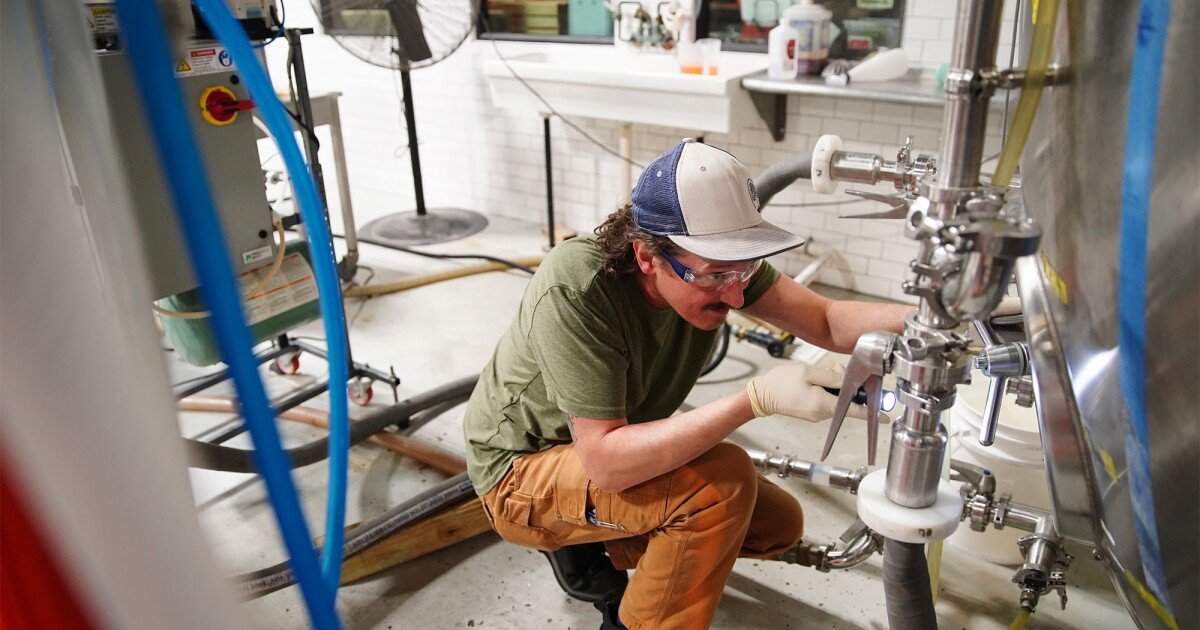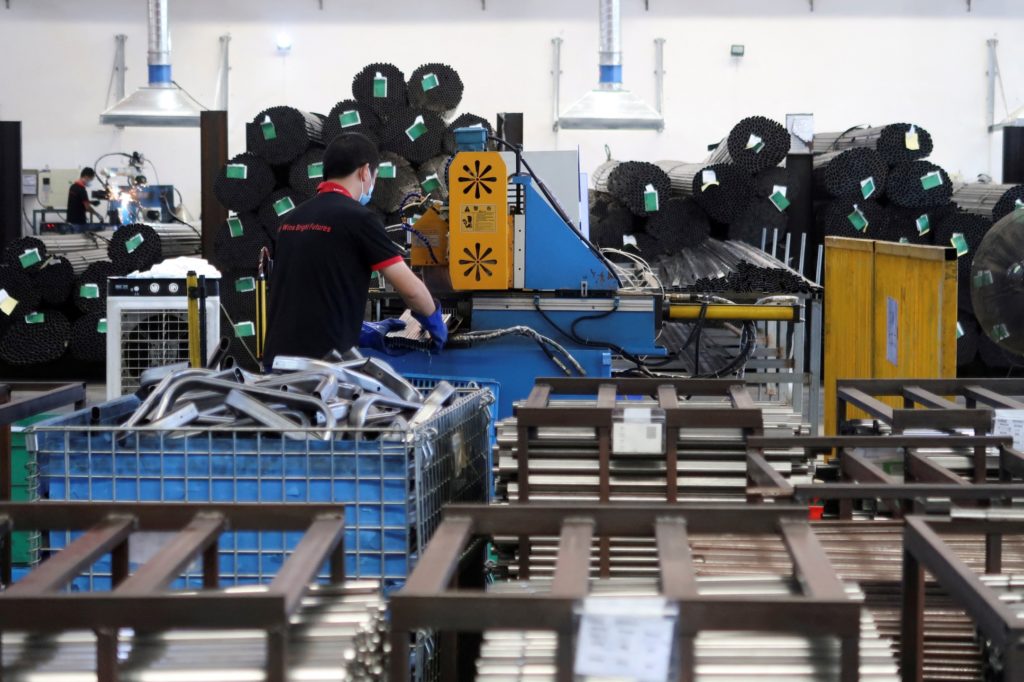## Level Up Your Business Savvy: How Tariffs & Uncertainty Are Reshaping the American Game
You’ve mastered the art of the power-up and conquered countless boss battles, but what happens when the real world throws a wrench into your plans? That’s the situation many US business leaders are facing right now.

Imagine navigating a treacherous maze of tariffs and economic uncertainty, with every turn potentially leading to a dead end. That’s the reality for American companies, forced to adapt and evolve as the global trade landscape shifts.

Join us as we dive into how US business leaders are strategizing in this volatile climate, analyzing the strategies they’re deploying and the impact on the games you love. From pivoting production to exploring new markets, we’ll break down the decisions shaping the future of American business – think of it as a real-world game theory, with high stakes and even higher consequences.

The Real World Impact: U.S. Businesses Feel the Pinch
Case Study: Northeast Ohio’s Craft Brewers Caught in the Crossfire

President Donald Trump’s sweeping 25% tariffs on imported aluminum and steel, coupled with threats of further tariffs on Canadian barley, have thrown the craft brewing industry in Northeast Ohio into a state of uncertainty. For Dave Sutula, head brewer of Royal Docks Brewing Co. in Canton, the unpredictability of the situation has created significant challenges. “I’m terrified,” Sutula admits. “The only strategy is getting up in the morning and going to work, opening up your email with bated breath, and see what happened today.” Royal Docks, a mid-size brewery producing 5,000 barrels of beer annually, relies heavily on aluminum cans for distribution. The tariffs have directly impacted their bottom line, with Sutula estimating that 55 to 60% of his revenue is now subject to potential price fluctuations.
Similarly, Julie Hanson, director of procurement at Fat Head’s Brewery in Middleburg Heights, describes the situation as a “daily disruption.” Fat Head’s, a regional brewery producing 50,000 barrels annually, has seen repeated price changes from suppliers, forcing them to scramble to adapt. Hanson explains, “We’ve seen change after change, after adjustment after adjustment, after disruption after disruption. The potential for it to change tomorrow is pretty high.”
The concern extends beyond the immediate impact on production costs. Smaller breweries, lacking the storage capacity to stockpile aluminum cans or the financial resources to absorb sudden price increases, are facing a stark reality. Hanson emphasizes, “Smaller breweries that don’t have the means or space to plan ahead like this will likely be hit the hardest.”

From Aluminum Cans to Barley: Examining Specific Industries Facing Supply Chain Disruptions and Price Hikes
The ripple effects of tariffs extend far beyond the craft brewing industry. A wide range of sectors are grappling with supply chain disruptions and rising input costs. Manufacturing, automotive, and construction industries, all heavily reliant on imported aluminum and steel, are particularly vulnerable. The cost of raw materials has surged, squeezing profit margins and forcing businesses to make tough decisions.
Supply chains are becoming increasingly fragile. Manufacturers are struggling to find alternative suppliers, leading to delays and production bottlenecks. The uncertainty surrounding future tariffs adds another layer of complexity, making it difficult for businesses to plan for the long term.
Adapting and Surviving: Strategies Businesses are Employing to Weather the Storm
In the face of these challenges, businesses are employing a variety of strategies to mitigate the impact of tariffs. Some are exploring alternative sourcing options, seeking out suppliers from countries not subject to tariffs. This can be a complex and time-consuming process, requiring careful vetting of suppliers and potential logistical hurdles.
Others are investing in innovation, seeking to develop new technologies and processes that reduce reliance on imported materials. This can involve exploring domestic sourcing options, investing in research and development, or adopting more efficient manufacturing techniques.
Price increases are often a last resort, but many businesses are finding themselves forced to raise prices to offset the rising cost of goods. This can impact consumer demand and profitability, creating a delicate balancing act.
The Road Ahead: Uncertainty and the Quest for Stability
Evolving Strategies: How Businesses are Adjusting Plans and Embracing Uncertainty
The evolving nature of trade policy is forcing businesses to adopt more agile and flexible strategies. They are moving away from long-term planning and embracing a more reactive approach. This requires constant monitoring of trade developments, rapid adjustments to supply chains, and a willingness to experiment with new solutions.
Negotiating and Diversifying: Seeking Alternative Suppliers and Rethinking Supply Chains
Many businesses are engaging in intensive negotiations with suppliers to secure favorable pricing and explore alternative sourcing options. This involves building relationships with new suppliers, diversifying their supply chains, and strategically managing inventory levels.
Innovation and Resilience: Exploring New Technologies and Business Models to Overcome Challenges
The uncertainty surrounding trade policy is driving innovation. Businesses are exploring new technologies, such as 3D printing and robotics, to reduce their reliance on imported materials and streamline production processes. Some are even considering changing their business models entirely, shifting away from global supply chains and embracing more localized production.
Policy Paralysis: Calls for a More Predictable Trade Environment
The lack of clarity and stability in trade policy is creating a climate of uncertainty that is hindering business investment and economic growth. Businesses are calling for a more predictable trade environment, with clear rules and regulations that provide a foundation for long-term planning.
The Need for Clarity: Businesses Urge for Stable Trade Policies and Reduced Uncertainty
The current trade war is creating a sense of unease and instability. Businesses are struggling to navigate the ever-changing landscape of tariffs and trade barriers, making it difficult to make sound investments and plan for the future. A more predictable trade environment would allow businesses to focus on growth and innovation, rather than constantly reacting to policy shifts.
The Debate Continues: Exploring Different Perspectives on Trade Negotiations and Protectionism
The debate over trade policy is multifaceted and complex. While some argue that tariffs are necessary to protect domestic industries and jobs, others contend that they stifle competition and harm consumers. Finding a balance between protecting domestic interests and promoting free trade remains a key challenge for policymakers.
Conclusion
As the trade winds whip up uncertainty and tariffs loom large, U.S. business leaders are facing a critical crossroads. This isn’t just about shifting plans; it’s about navigating a geopolitical chess game where every move has far-reaching consequences. Businesses are scrambling to hedge against rising costs, explore alternative sourcing options, and invest in domestic production. While some see opportunity in reshoring and innovation, others grapple with the potential for economic slowdown and market instability. The implications of these decisions extend far beyond corporate boardrooms. Jobs, investment, and consumer prices are all caught in the crosshairs. Will companies prioritize short-term gains or long-term resilience? Will innovation thrive in this climate of disruption, or will fear stifle progress? The answers will shape not only the future of American business, but the very fabric of our economy. One thing is clear: the landscape is shifting, and the companies that adapt and evolve will be the ones that ultimately prevail. The question is, are we ready to play the long game?
